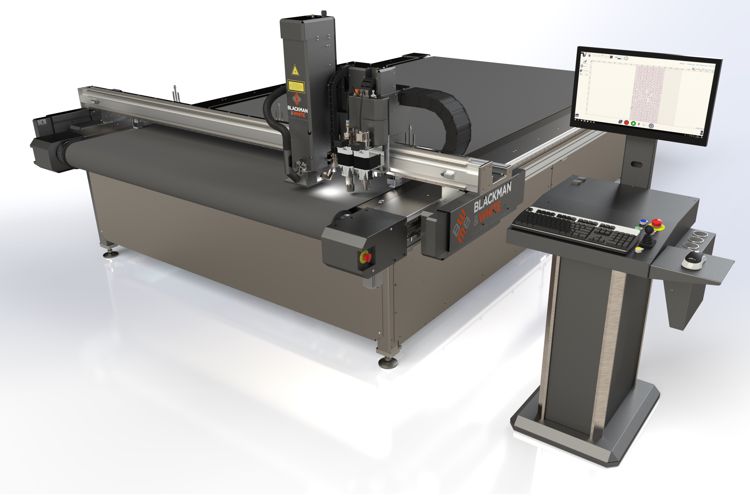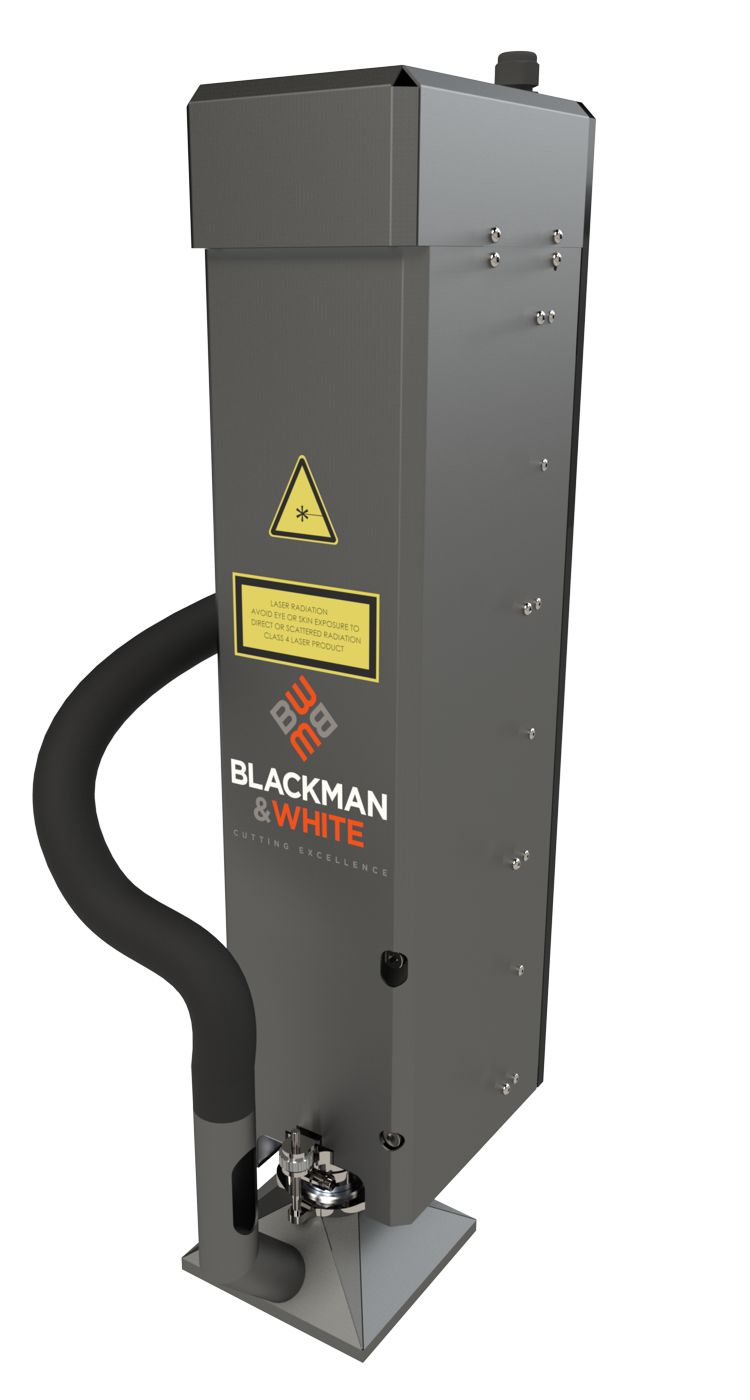Getting the best from laser cutting technology
With additional functionality such as cutting acrylic with a polished edge, Blackman & White has supplied hundreds of customers with this modular technology. Eiko Ichikawa-White answers some of the frequently asked questions the company receives.
Laser cutting is a powerful tool for snag-free, sealed-edge cutting of textiles for a variety of applications from printed signage to airbags and sailcloth.
Used as a modular add-on on the Genesis-V multi-tool wide format cutting table, cutting flexibility is unparalleled, with the ability to route, knife cut and laser cut all on one flatbed or conveyorised cutting table. Fast processing speeds, high production rate and virtually radius-free cutting of inner contours, coupled with high reliability and low maintenance, the laser ensures a consistent high quality cut.
How can we keep our working environment clean and safe during laser cutting?
The Blackman & White Laser Cutter takes fumes directly above the cut path into a powerful charcoal fume extraction system, eliminating cutting debris and odour. This system has replaceable filters which ensures that all fumes are removed from the working environment.
A lingering smell (out-gassing) depending on the material being cut is an inevitable part of the process but quickly fades on the cut sample within a few minutes.
Does laser cutting leave a brown edge?
No. If the correct parameters are set for the job, the purge or pressure of the air to the laser head and the power of the laser to the speed of the cut, the material can be cut without any brownage. This is a simple adjustment that your trainer or service engineer can advise on.
Is laser cutting slower than knife cutting?
Not necessarily. Depending on the thickness, a flag material can be cut as fast as the machine can run. A heavy canvas might need to be cut at a slower speed to allow for the material density. Variation in speed is dependent on the material being cut.
Why not use a hot knife?
A hot knife creates hazardous fumes which cannot be controlled and is more dangerous. This type of cutting is an additional process which can be time consuming and requires contact with the material in order to cut. The laser is contactless and eliminates the risk of distortions and fabric stretching.
Is it difficult to change the conveyorised laser belt?
No. The patented laser belt is designed with quick change functionality in mind. Simple storage when not in use means that cutting on the felt bed is quickly changed to laser cutting by laying the belt over the table with minimal manpower.
Can I cut PVC with the laser?
PVC is not suited to laser cutting. The fumes emitted while extracted by the filtration system are toxic and it is not advisable to inhale any residual fumes released by the material after cutting.
Laser cutting or rotary wheel?
Highly reliable non-contact laser cutting ensures no accidental lifting or moving of the fabrics while cutting. There is no wrapping of threads around cutting wheels or fraying of edges as they are sealed.
Are the fumes dangerous?
The fumes and debris emitted by the majority of materials that would be cut with the laser are non-toxic; if you have any concerns, the fabric manufacturer will have published relevant H&S information.
www.blackmanandwhite.com


